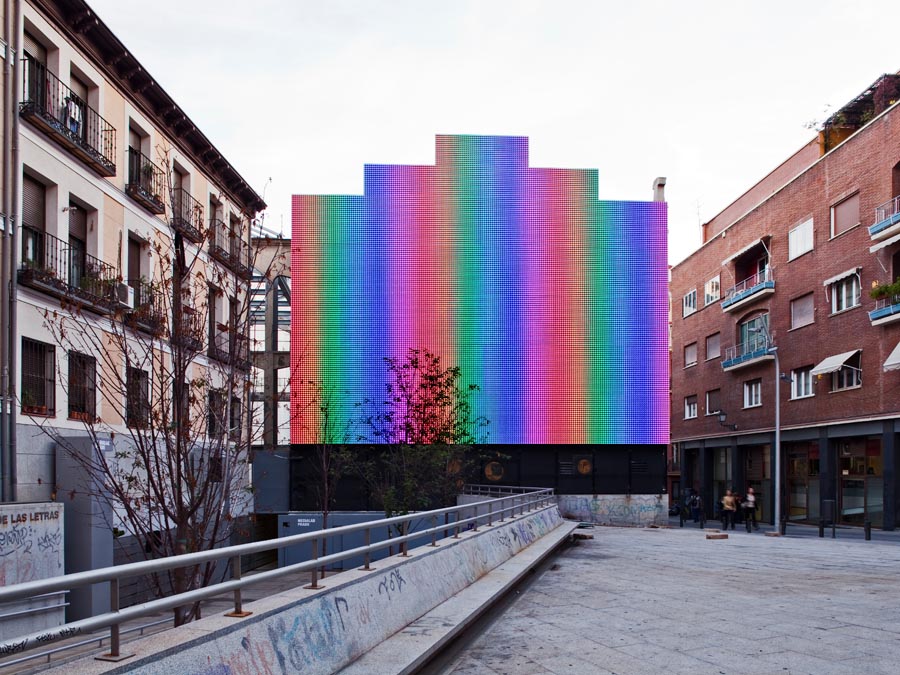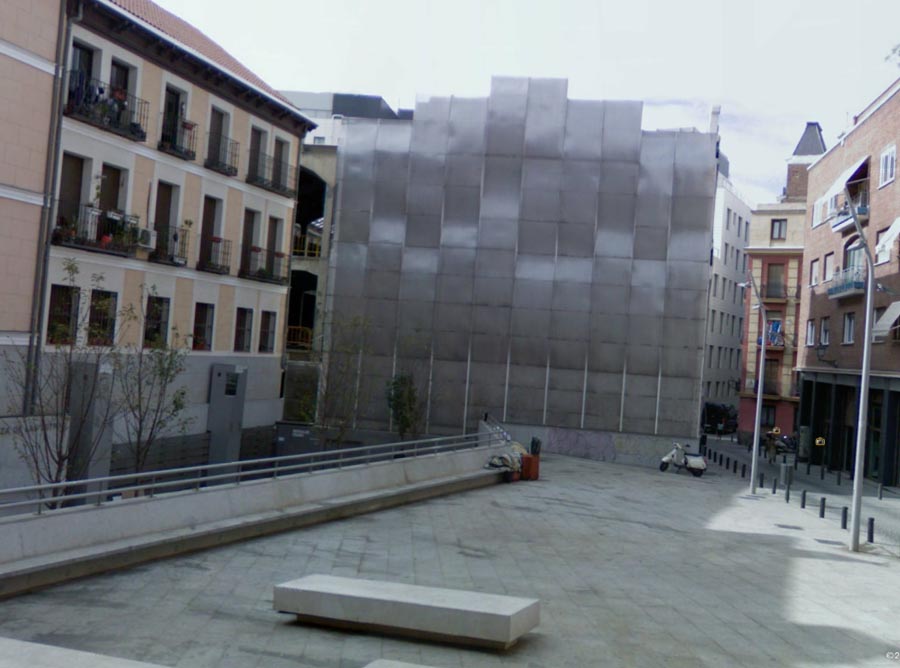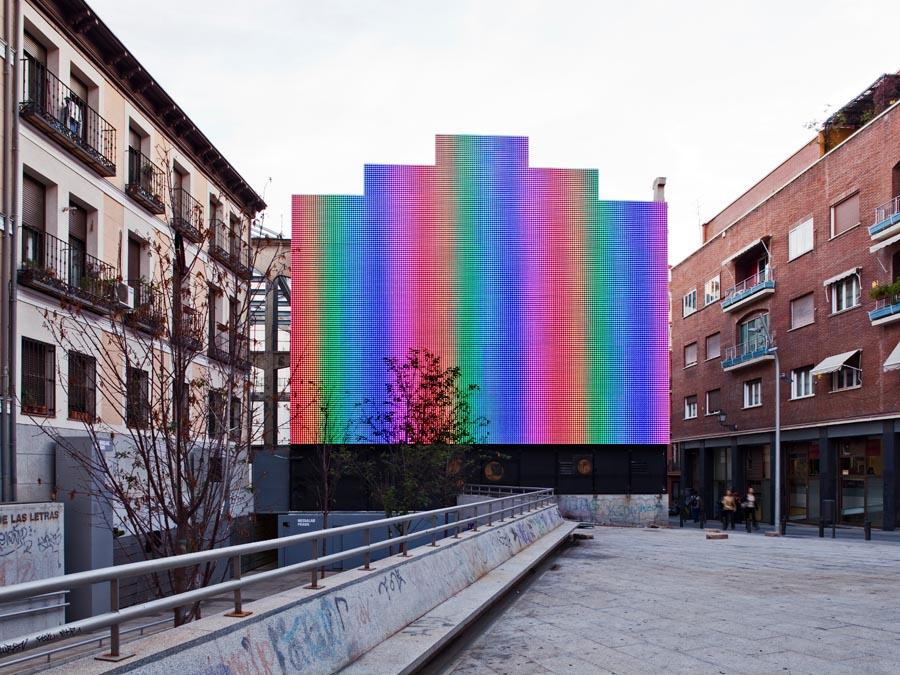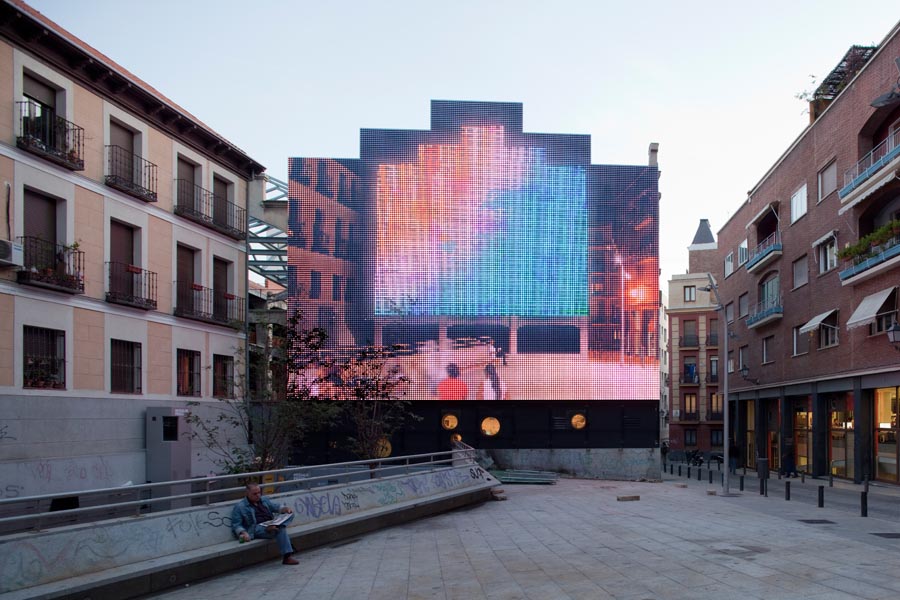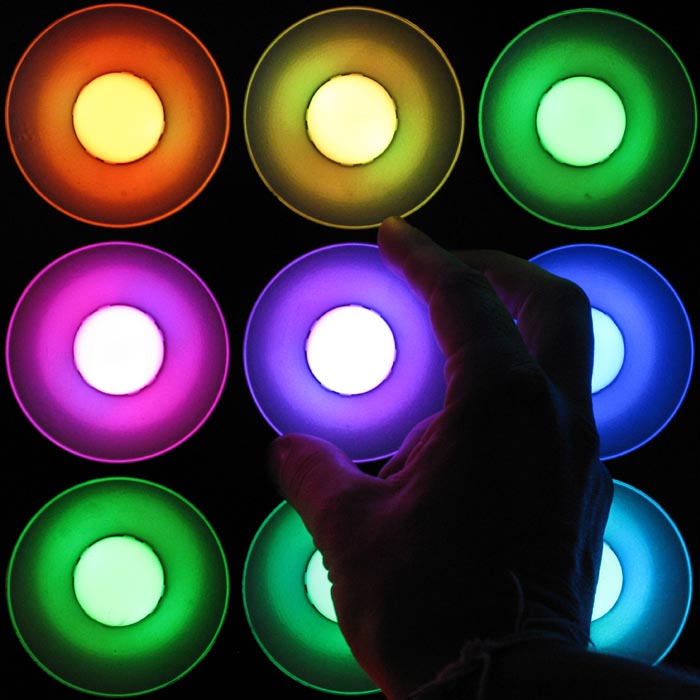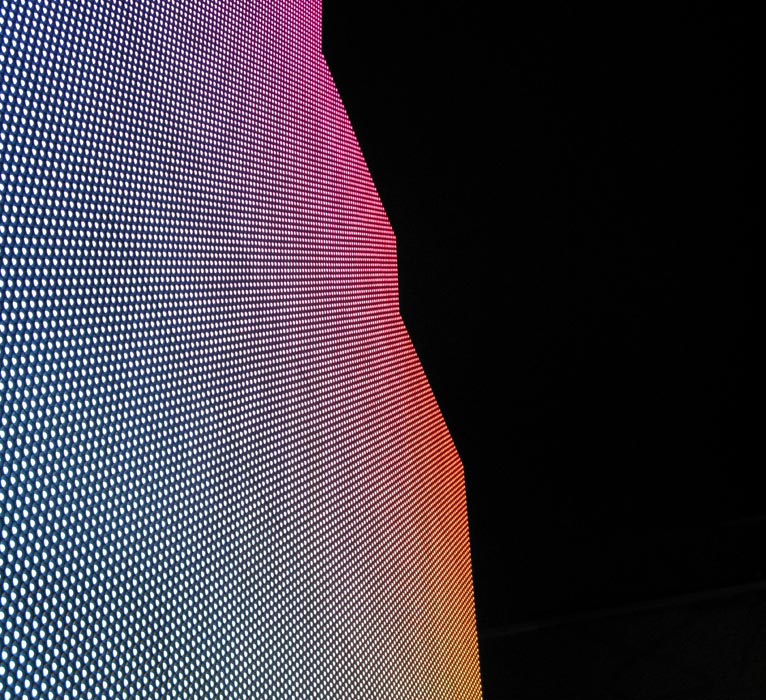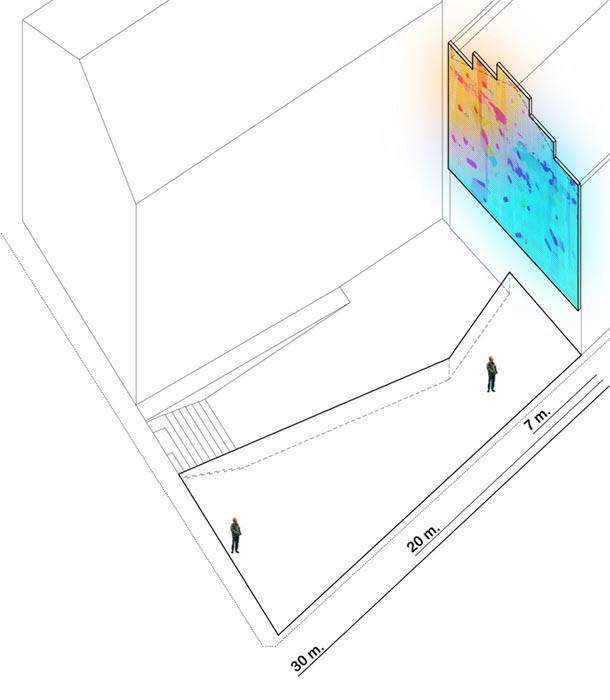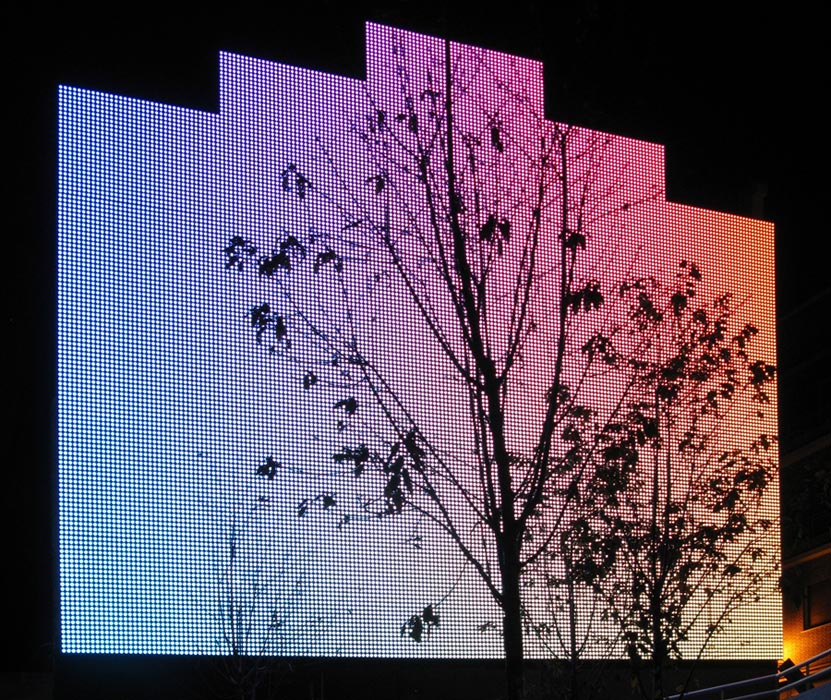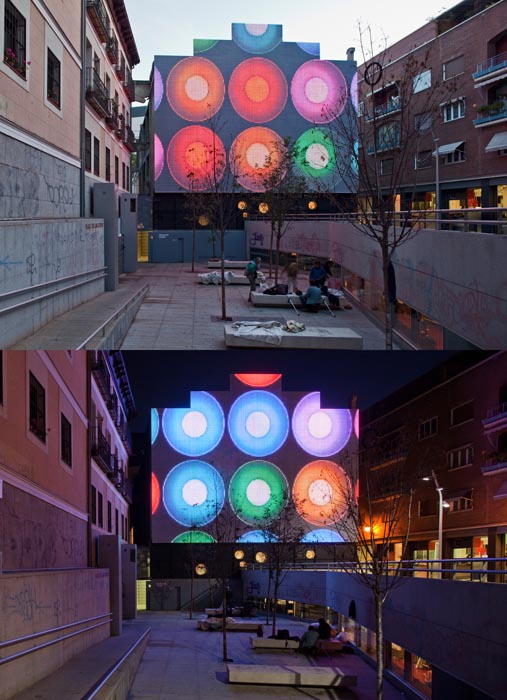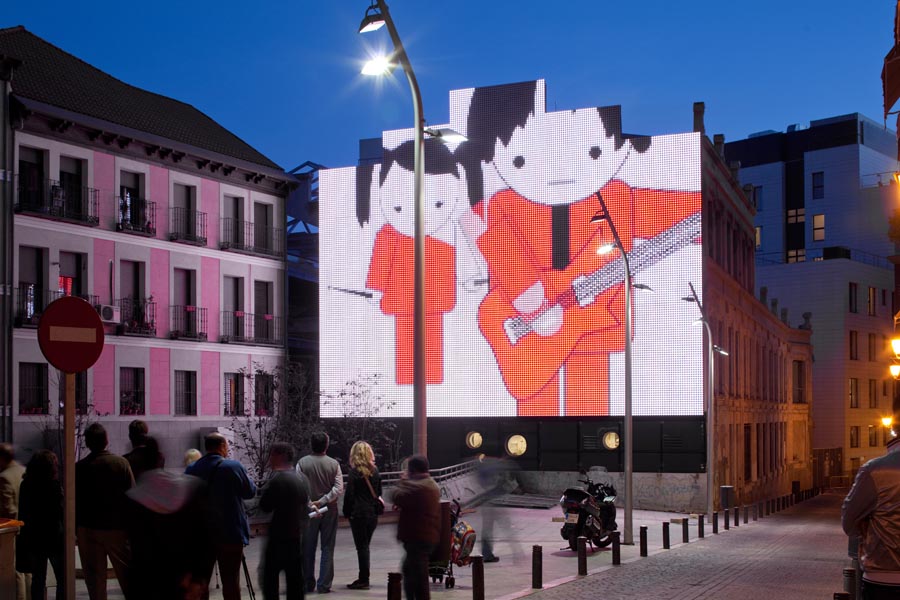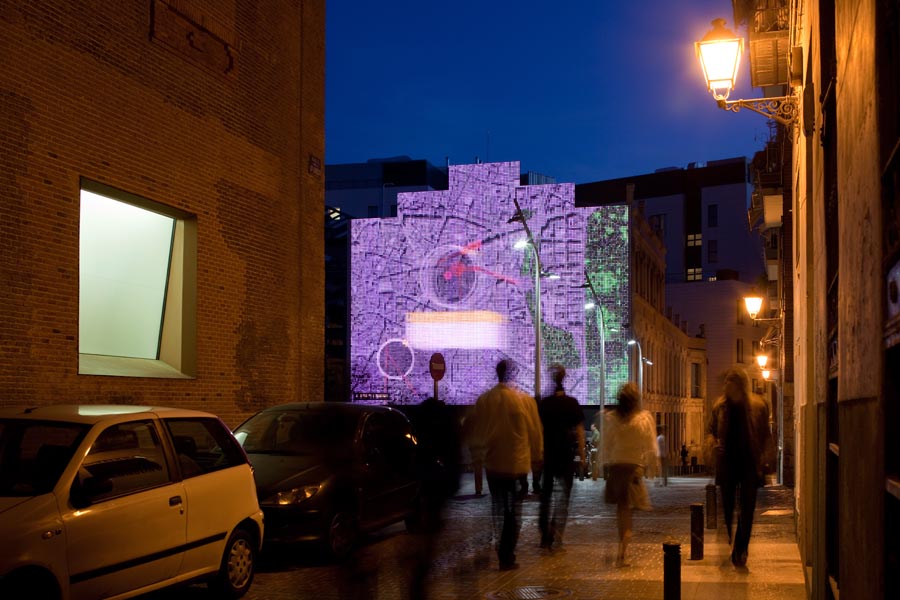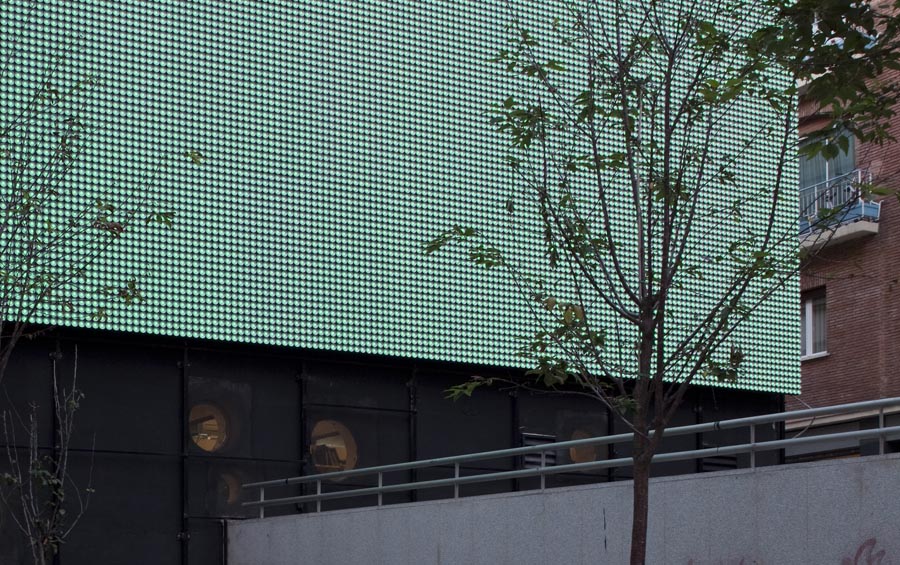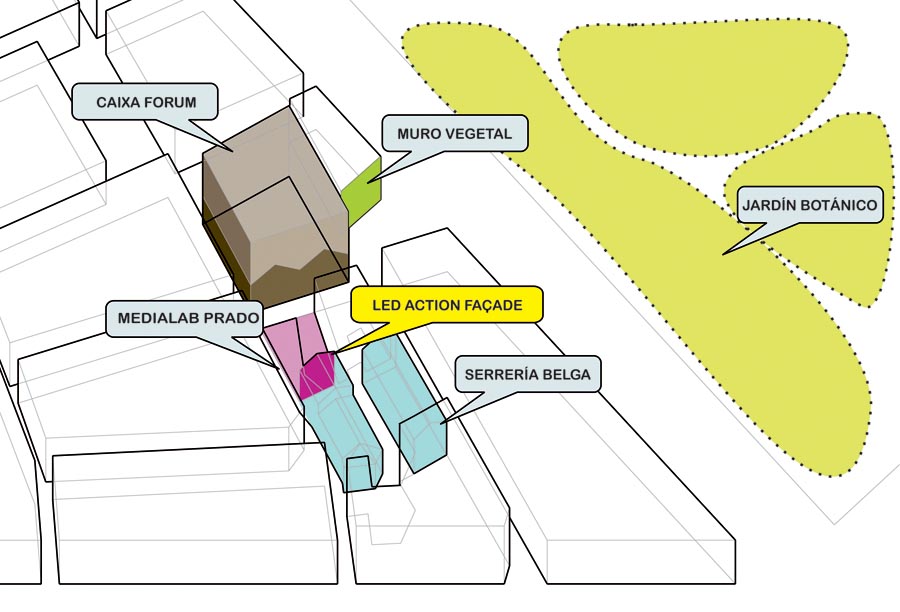Previous state
Popularly known as the “Triángulo de las Artes” (Triangle of the Arts), the zone that lies between the historic centre of Madrid and the Retiro Park is notable for its profusion of art galleries to the extent that it has come to constitute one of the greatest concentrations of art works in all Europe. At the apices of the triangle, the most relevant exhibition facilities in the zone are the Prado Museum, the Reina Sofía National Museum and the Thyssen-Bornemisza Museum. These were joined in 2008 by the CaixaForum, a non-profit-making exhibition centre sponsored by the banking entity that gives it its name.The construction of the new centre, fruit of reforms and extension work carried out on an old textile factory, was accompanied by the opening up of two adjacent squares that function as the building’s vestibular spaces. One of these is the result of the demolition of a petrol station, a fact that explains the appearance of an awkward flank wall that did nothing to favour its appearance. The problem was resolved by means of a now-famous intervention that covered this vertical face with greenery watered by a concealed irrigation system. The other space, which was opened in 2007 and named Plaza de las Letras, is of similar origin and thus faced an almost identical problem.
This open space appeared in 2004 as the result of a fire in the Mediodía sub-power station. The subsequent demolition of the installations uncovered another blind flank wall, this time of an old industrial plant that had housed the sawmill factory Serrerías Belgas, which is presently being refurbished as the new headquarters of Intermediae, a centre that comes under the aegis of the Arts Department of the Madrid City Council and that works in the field of digital technology applications in artistic creation. The Arts Department also refurbished a space beneath the Plaza de les Letras to house Medialab/Prado, a programme that preceded Intermediae and also working with artistic expressions related with digital culture. When the square was developed, the wall of Serrerías Belgas was covered by layer of undulating steel sheets. Although this palliated the effect of the flank wall, the solution continued to be of a merely provisional nature.
Aim of the intervention
The same year in which the CaixaForum opened its doors the Arts Department of the Madrid City Council set about finding the definitive solution. The idea was to make the most of the visibility of the flank wall because of its privileged situation in the heart of a district so linked with the world of art, and also because of its intrinsic geometry consisting of a large vertical plane with a staggered profile at the top, directly facing the CaixaForum building. The Medialab/Prado programme was commissioned to produce the concept, development and contents of the project.Description
The result of the initiative was the conversion of a blind flank wall into a large-scale digital screen that has been named Led Action Façade. The vertical face has been covered by a regular matrix of truncated aluminium cones, each of which functions as a colour pixel since it contains three diodes (LED) that give out light according to the RGB chromatic model. The section of cones has been designed in such a way that their inner faces reflect the light of the emission source and amplify the size of each pixel, which ends up with a diameter of five centimetres.This design permits a considerable reduction in the number of LEDs necessary to cover a designated surface and, although it reduces the resolution of the images projected on to the screen, it also considerably cuts installation costs. In the end, 35,000 nodes were required to cover the surface of one hundred and forty-four square metres. Moreover, the physical independence of the cones means that, instead of adopting the usual rectangular profile, the screen has a staggered upper profile like that of the flank wall it hides. When the screen is switched off the volume of the cones gives the cover a vibrant crinkled surface, thus distinguishing it from the other conventional facades. Its orientation is due north so that it is never exposed to direct sunlight, yet it has sufficient light to function during the day while, by night, it offers more contrasted, vivid images.
From the moment of its installation, Medialab/Prado has been continuously organising workshops and seminars where experts and occasional users are invited to come and explore its possibilities. The exploration is structured around two main themes. One is concerned with the production of quality content that will capture the public interest and that is also related with art, public space and the new technologies. The other facet involves individuals and groups who come together to reflect on production of this content, understanding this work as an open, continuous process of experimentation with new methods of interaction and participation. Contributions can be constant and stable as well as specific, periodical and anonymous.
Assessment
The Led Action Façade is the extraordinary solution to an ordinary problem. Situations in which the continuous transformation of a city uncovers blind flank walls that mar the cityscape are frequent and abundant. In this case, however, the form in which the situation has been resolved offers so many side benefits that the original problem has been relegated to a status that is little more than anecdotal. In effect, more than in what it hides, the screen’s importance lies in what it shows.Though it may be true that one finds more and more similar devices in urban space, it is also true that they are almost always geared to the unidirectional dissemination of propaganda or advertising messages. The Led Action Façade, however, is an interactive support linking virtual public space with real urban public space. This connection is quite unusual because people’s access to the forms of social relations held out by the new technologies normally occurs in the private domain, which means that people’s ability to join digital networks is neither equitable nor universal.
Like any other private screen connected to Internet, the Led Action Façade can show a great variety of contents of public interest, whether it is in the form of information, food for thought, or just for fun. Its exceptionality springs from its ability to bring together residents of the neighbourhood and visitors to the Triángulo de las Artes to share a space that fosters social participation, bidirectional interaction and a sense of belonging to a community that is much more explicit than what one tends to find with most conventional public spaces.
David Bravo Bordas, architect
[Last update: 02/05/2018]


